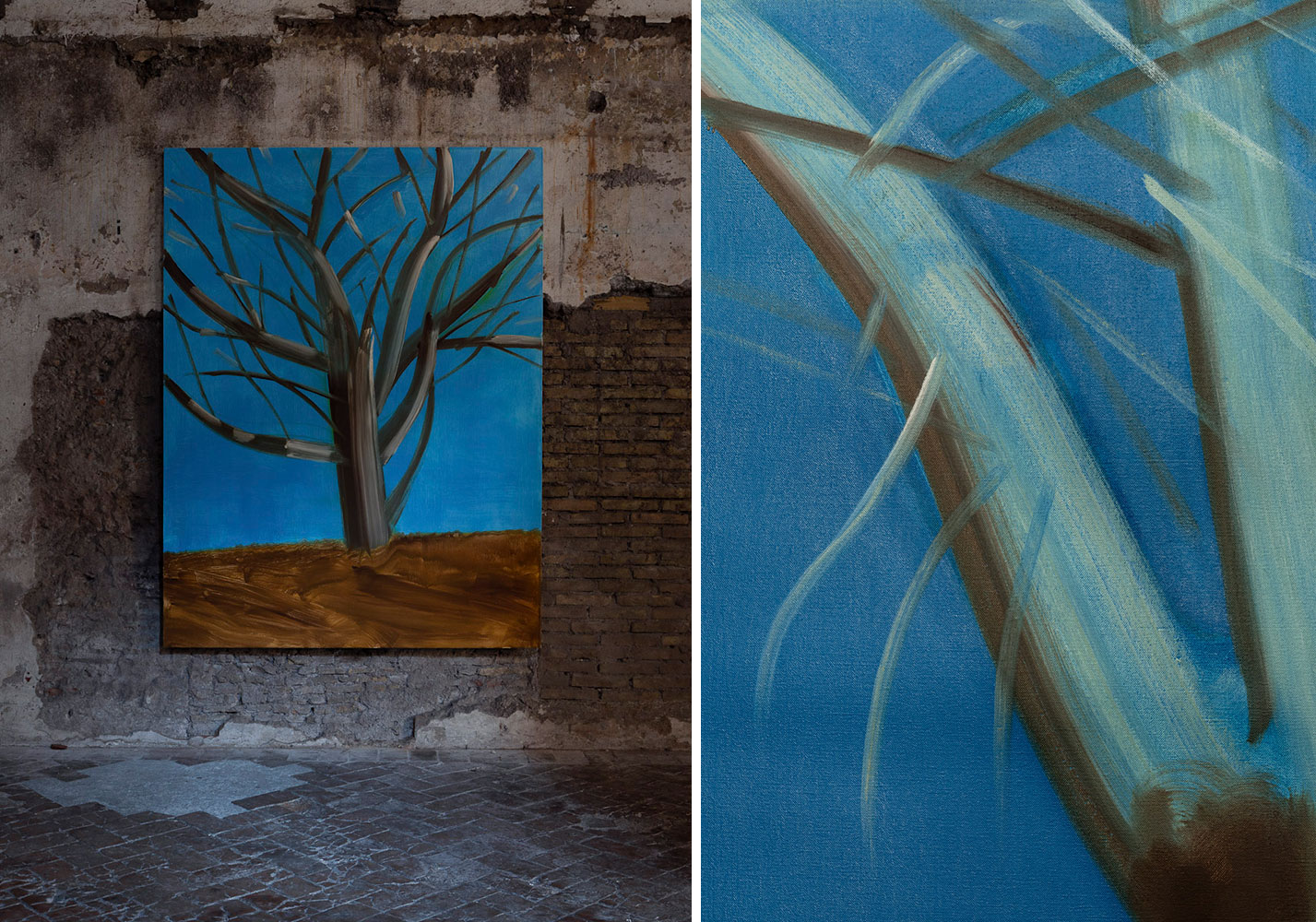ART CITIES:Rome-Alex Katz
 Often associated with the Pop Art Movement, Alex Katz began exhibiting his work in 1954, and since that time he has produced a celebrated body of work that includes paintings, drawings, sculpture, and prints. His earliest work took inspiration from various aspects of mid-century American culture and society, including television, film, and advertising, and over the past five and a half decades he has established himself as a preeminent painter of modern life, whose distinctive portraits and lyrical landscapes bear a flattened surface and consistent economy of line.
Often associated with the Pop Art Movement, Alex Katz began exhibiting his work in 1954, and since that time he has produced a celebrated body of work that includes paintings, drawings, sculpture, and prints. His earliest work took inspiration from various aspects of mid-century American culture and society, including television, film, and advertising, and over the past five and a half decades he has established himself as a preeminent painter of modern life, whose distinctive portraits and lyrical landscapes bear a flattened surface and consistent economy of line.
By Efi Michalarou
Photo: Gladstone Gallery Archive
Although best known for his portraits, Katz has painted landscapes both inside the studio and out-of-doors since the beginning of his career, the artist presents three monumental paintings of trees at the Sant’Andrea de Scaphis* in Rome a unique space where past and present intertwine. These paintings of trees are elegiac portraits of unique individuals who stand with a remoteness at the edges of our time. Not truly withdrawn, but abiding apart from the churn that surrounds them, these sentinels embody an elegance and brutal lucidity. The hallucinatory cropping of each work suggests a screen through which we encounter our reflected selves in infinite space. Katz arrests our gaze with the stark beauty of that New York light and the rendering of a talisman so ubiquitous it is invisible. Walking from one warm human zone to another, Katz apprehends in the instant and, retaining that sensation, then paints on the outer edge of the moment, conveying the impermanence of the light and the present. We cannot kick our yearning for transcendent absolutes, but these trees do not exist outside of the cold fact of that light that surrounds, embraces and de&nes them. Katz confronts our eye with an imagery that is nothing but itself. He paints cold and impersonal – absent of any feeling for the inner lives of his subjects. He renders with the pragmatism of an urgent muralist with #me breathing down his neck. Humanism is absent, sentiment is stripped away, as bare as the winter trees themselves.
Alex Katz studied fine art at Cooper Union Art School in Manhattan from 1946, followed by Summer residencies at Skowhegan School for Painting and Sculpture in Maine. It was at Skowhegan that Katz was introduced to en plein air painting, a revelation that he claims was a pivotal development in his early career. The present work was likely painted in front of the motif and embodies Katz’s signature style of smooth, hard-edged shapes and large planes of color. While Katz employed similar references to advertising (particularly billboards) and popular culture in his works, he was not considered a part of the core group of Pop artists and did not exhibit with the lynchpin figures like Lichtenstein and Warhol – he instead established his own style that ran parallel and can be considered a mixture of American Realist and Pop artist, among other things.
* Founded in the 9th century, the chapel of Sant’Andrea de Scaphis located in Trastevere, Rome was deconsecrated in 1942 and then closed for decades. On Easter Sunday, 2015, Gavin Brown reopened its doors with a work by Rirkrit Tiravanija. Since then, the space has hosted memorable exhibitions by, among others, Joan Jonas, Mark Leckey, Jannis Kounellis, Arthur Jafa, and Laura Owens.
Photo: Installation view Alex Katz, Sant’Andrea De Scaphis-Rome, 2020-2021, Courtesy the artist and Gladstone Gallery
Info: Sant’Andrea De Scaphis, Via dei Vascellari, 69, Rome, Duration: 19/11/2020-30/1/2021, Days & Hours: Thu-Sat 12:00-19:00




